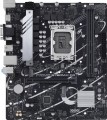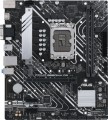Chipset
The chipset model installed in the motherboard. AMD's current chipset models are
B450,
A520,
B550,
X570,
A620,
B650,
B650E,
X670,
X670E,
B840,
B850,
X870,
X870E. For Intel, in turn, the list of chipsets looks like this:
X299,
H410,
B460,
H470,
Z490,
H510,
B560,
H570,
Z590,
H610,
B660,
H670,
Z690,
B760,
Z790,
H810,
B860,
Z890.
A chipset is a set of chips on the motherboard through which the individual components of the system inter
...act directly: the processor, RAM, drives, audio and video adapters, network controllers, etc. Technically, such a set consists of two parts — the north and south bridges. The key element is the northbridge, it connects the processor, memory, graphics card and the southbridge (together with the devices it controls). Therefore, it is often the name of the north bridge that is indicated as the chipset model, and the south bridge model is specified separately (see below); it is this scheme that is used in traditional layout motherboards, where bridges are made in the form of separate microcircuits. There are also solutions where both bridges are combined in one chip; for them, the name of the entire chipset can be indicated.
Anyway, knowing the chipset model, you can find various additional data on it — from general reviews to special instructions. An ordinary user, usually, does not need such information, but it can be useful for various professional tasks.M.2 version
The version of the M.2 interface determines both the maximum data transfer rate and the supported devices that can be connected via physical M.2 connectors (see the corresponding paragraph).
The version of the M.2 interface in the specifications of motherboards is usually indicated by the number of connectors themselves and by the PCI-E revision provided for in each of them. For example, the entry “3x4.0” means three connectors capable of supporting PCI-E 4.0; and the designation “2x5.0, 1x4.0” means a trio of connectors, two of which support PCI-E 4.0, and another one supports PCI-E 5.0.
ARGB LED strip
Connector for connecting an addressable LED strip as a decorative lighting for a computer case. This type of "smart" tape is based on special LEDs, each of which consists of an LED light and a built-in controller, which allows you to flexibly control the luminosity using a special digital protocol and create amazing effects.
Audiochip
The model of the audio chip (a module for processing and outputting sound) installed on the motherboard. Data on the exact name of the sound chip will be useful when looking for detailed information about it.
Modern "motherboards" can be equipped with fairly advanced audio modules, with high sound quality and extensive features, which makes them suitable even for gaming and multimedia PCs (although professional audio work will still most likely require a separate sound card). Here are the most popular modern audio chips:
Realtek ALC887,
Realtek ALC892,
Realtek ALC1150,
Realtek ALC1200,
Realtek ALC1220,
Realtek ALC4050,
Realtek ALC4080,
Supreme FX.
LAN (RJ-45)
The type of LAN interface provided in the design of the motherboard. LAN (also known as RJ-45 and Ethernet) — a standard connector for wired connection to computer networks; can be used for both local and Internet. The type of such a connector is indicated by the maximum speed. Note that nowadays, even inexpensive "motherboards" are usually equipped with fairly fast LAN adapters — at least gigabit ones. The meaning of such characteristics is not only (and often not so much) to speed up the transfer of large amounts of data, but also to reduce lags in the network connection. This can be important for tasks that require good responsiveness or precise synchronization, such as online games.
—
1 Gbps. The standard used in the vast majority of desktop (non-server) motherboards. On the one hand, it provides more than a decent connection speed, sufficient even for large amounts of information; on the other hand, it is inexpensive and can be installed even in the simplest low-cost motherboards.
—
2.5 Gbps. An improved version of the gigabit standard, it is also a simplified and somewhat cheaper version of the 5-gigabit standard. It is found in separate "motherboards" for gaming purposes.
—
5 Gbps. A kind of transitional option between a relatively simple gigabit LAN (see above) and an advanced 10-gigabit LAN (see below). Found in some gaming motherboards.
...This standard costs less than the 10-gigabit one, while the communication speed still turns out to be quite decent, and the lags are low.
— 10 Gbps. Such a data transfer rate is indispensable for large volumes of information; in addition, it provides a high speed of passing individual data blocks, which is important for reducing lags in online games. At the same time, this interface appeared relatively recently and is not cheap. Therefore, it is mainly used in top-end "motherboards" for gaming and server purposes (see "In the direction").
— 100 Mbps. A very popular standard in its time, which is now considered obsolete in light of the spread of faster versions of the LAN. It is extremely rare, mainly in separate low-cost boards.
